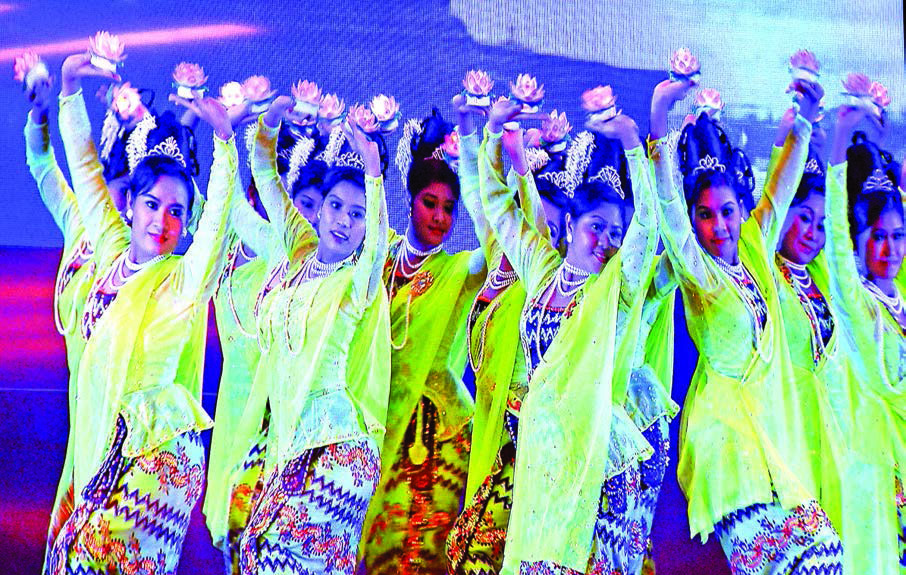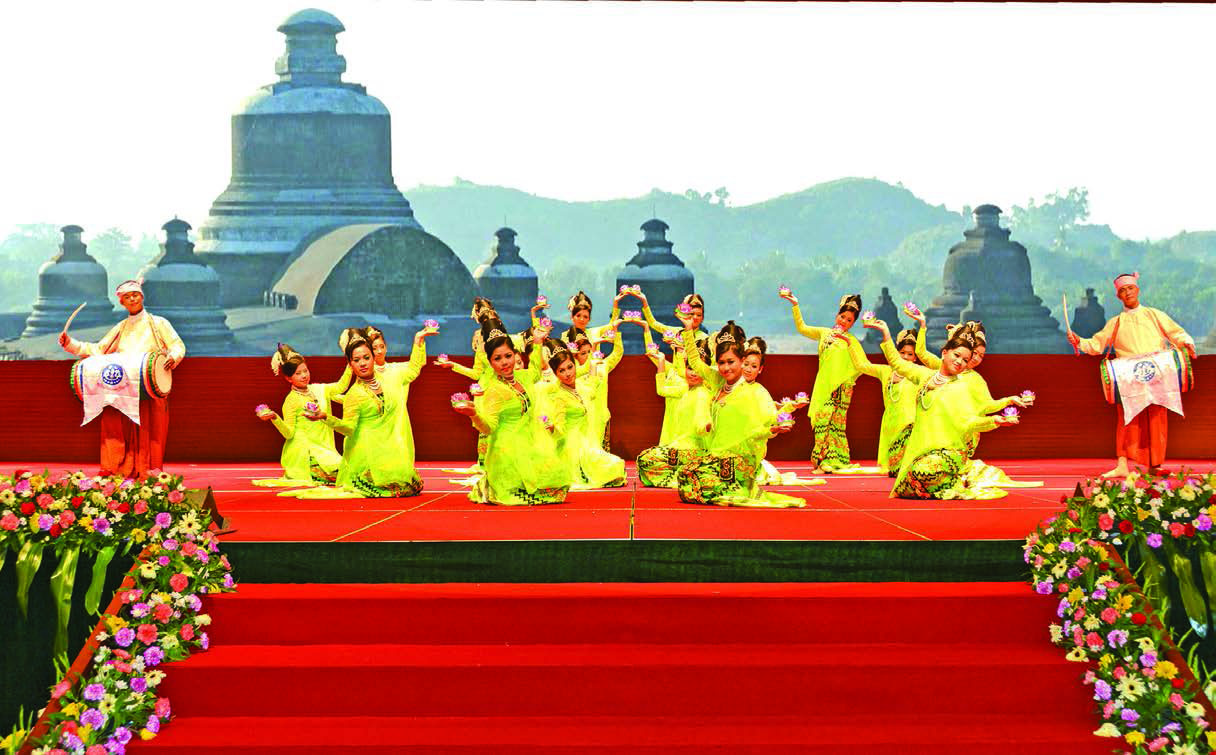By Aung Kyi Moe (Sittway)
BASED on Theravada Buddhism, the Rakhine culture, literature, music and fine arts have flourished. The Rakhine oillamp choral dancing is famous; so are the traditional slash-andburn dancing by Thet ethnic people, plate dancing by ethnic Maramargrees, bottle-dancing on the head by Dainet ethnic people and horn-dancing by ethnic Mros famous in their own ways in the Rakhine State.
Oh---Mahamuni Bagawah, Oh---Munimaha Bagawah, Oh---Munimaha Bagawah Buddam Seranam Gacchami, Dhamman Saraman Gacchami, Sangham Saraman Gacchamin.
Hymns
The above-mentioned parts of the sacred song belong to the Rakhine ethnic people; the name of the whole song is the Buddha Pujaniya. With the combination of that song with Rakhine traditional dance becomes the Buddha Pujaniya choral dancing. The song was composed by U Batha in 1965. His invention of musical notes was made in order to be compatible with worshipping to Buddha, Dhamma and Sanghas. The song itself was meant for worshipping the Lord Buddha.
Rakhine traditional Buddha pujaniya oil-lamp choral dancing is in accordance with Theravada Buddhism. The styles of dancing represent the three Gems of Buddha, Dhamma and Sangha. In 1966 on the 19th Union Day celebrations, the Rakhine Dance troupe presented the Buddha Pujaniya oil-lamp choral dancing on a variety show on behalf of the State. It became popular and have presented the dancing on every Union Day celebration since then, becoming a historic milestone for the Rakhine nationals.
Now in the State, oil-lamp choral dancing is unavoidably included in all student festivals, respect-paying ceremonies and other festivals. Songs give pleasure and evil to listeners; let them sing alone. But they should be sung with the inclusions of the Three Venerables: Buddha, Dhamma and Sangha.
Sculptured stone inscritions
In the Shaithoung Stupa in Mrauk-U Township, the pave paths are covered with the styles of sculptured stone inscriptions of worshipping flowers, oil lamps and choral dancing. From Mrauk-U Era to the present periods, the Rakhine musical instruments - flutes and drums – were played by the accompaniment of choral dancing for worshipping the Lord Buddha.
To worship oil-lamp choral dancing for the Lord Buddha, kerosene is poured into lamps together with a small pieces of cloth from Rakhine looms; the lamps are lit on the either side of the palm for dancing. Dancing with oil lamps starts firstly by kneeling down with uniform open palms. By lifting oil lamps on the palms and separating slowly the arms by lowering the palms up and down; their bodies sway from left to right and right to left.
Dancing in circles
They dance in circles by bending their waists, raising one arm over the head and other arm putting in an armpit with open palms. The arms raising over the head circle once and the palm in the armpit circle back slowly in motion over the head again. While doing the choral dancing, the dancers move their heads, waists and arms without putting out oil lamps and without spilling over the oil.
Dancing slowly by bending the waist and bringing the head down to their knees , you enjoy the Rakhine choral dancing and it regarded as a Rakhine historic style of dancing. Nowadays, oil-lamp dancing is replaced with ready-made electric lights.
Buddha Pujaniya song, composed by U Batha, was Myanmanised into “ Dream” song series and became more and more popular. Nowadays, Buddha pujaniya song and Rakhine traditional oil-lamp choral dancing are performed in beer pubs, bars and restaurants, making the Rakhine people feel offended for their literature, ethnic nationals and culture. The Rakhine Literature and Culture (Yangon) has requested the restaurants and bars not to use oil-lamp choral dancing as these songs are religiously sacred and should not be assessed in terms of money.
In conclusion, starting oh— munibagawah, Oh---Munibagawah, the Rakhine traditional oillamp dancing is a sacred song for the Buddhists as well as a classic in the hearts of ethnic Rakhine people. The oil-lamp choral dancing will keeping on flowing to be inscribed for the presentation. (Translated by Arakan Sein)



